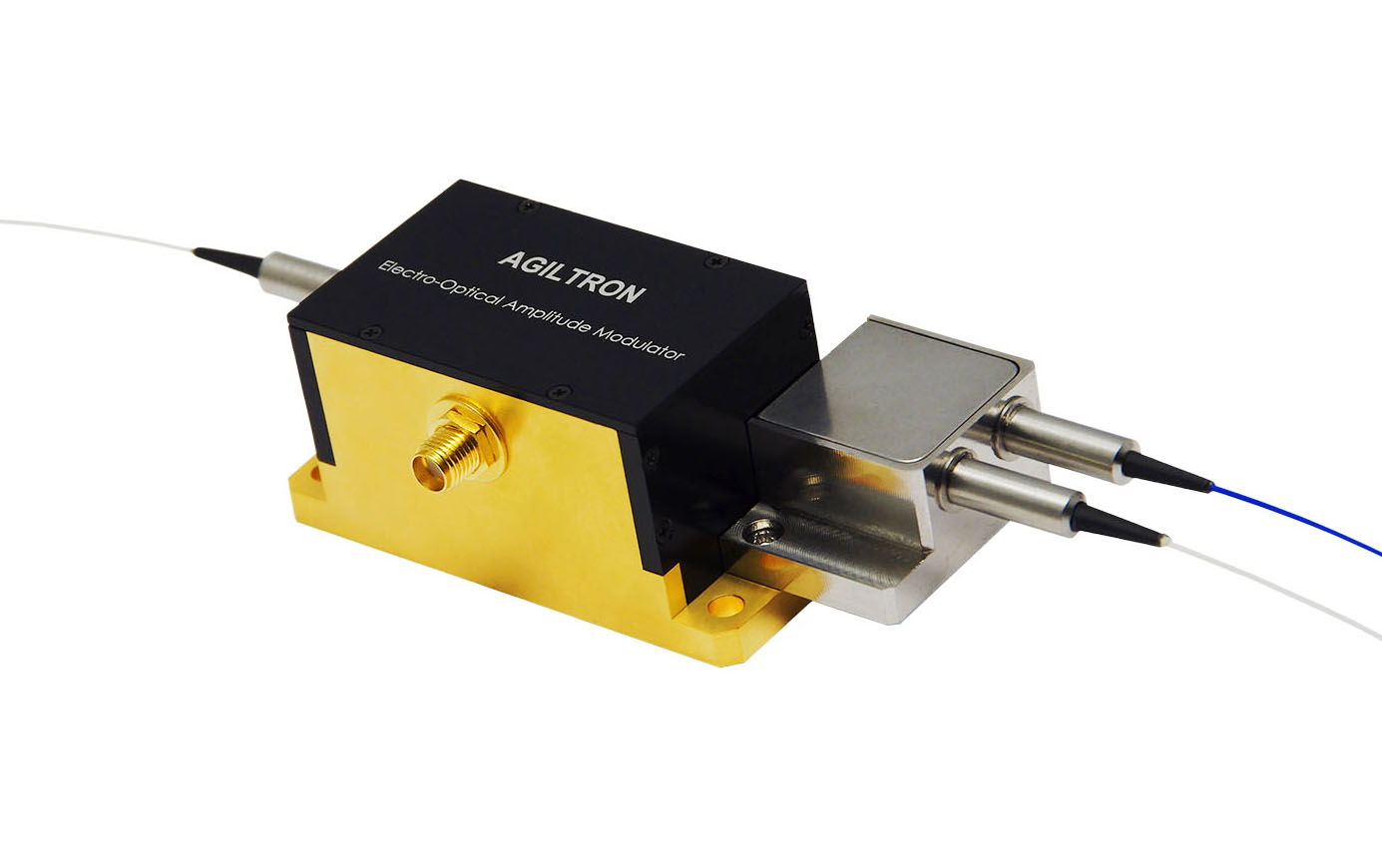SKU: NSRS
The resonance NS Series fiber optic switch/modulator is either a 2-port or a 3-port device featuring fast amplitude modulation at a fixed frequency with a selection from 10 to 90 MHz and low optical loss. This is achieved using a patented electro-optical configuration with a built-in high Q resonant circuit. Unlike other modulators, we use special electro-optical crystals of high stability that increase power handling and reduce drift/darkening. The NS fiber optic switch meets the most demanding switching requirements of continuous operations over 25 years and has non-mechanical ultra-high reliability. The switch is intrinsically bidirectional and selectable for polarization-independent or polarization-maintain by the fiber type.
Our resonant EO phase modulators can be driven by a standard laboratory function generator with a Half-Wave Drive Voltage of only 15 V at 633 nm. We offer an amplification driver with 5V.
The rise/fall time is intrinsically related to the crystal properties, and the repetition rate is associated with the driver. There are poor frequency response sections due to the device resonances. The NS devices are shipped mounted on a tuned driver.
The NS series switches respond to a control signal with any arbitrary timing with frequency from DC up to MHz. The switch is usually mounted on a tuned driver before shipping. The electrical power consumption is related to the repetition rate at which the switch is operated.
The dual-stage configuration increases the extinction ratio or cross-talk value.
The response is a sinusoidal wave shape for resonance devices.




Reviews
There are no reviews yet.